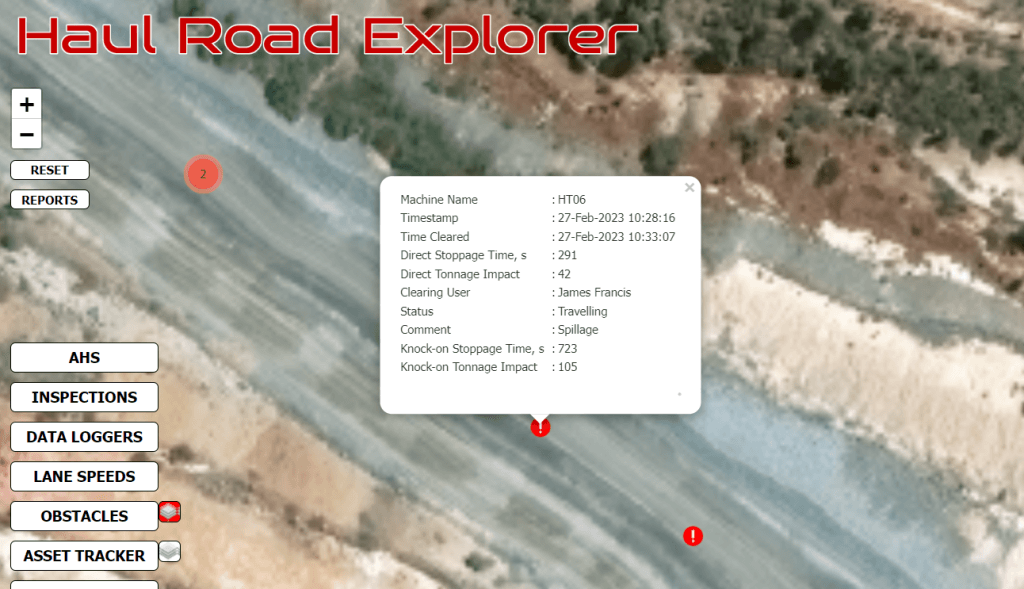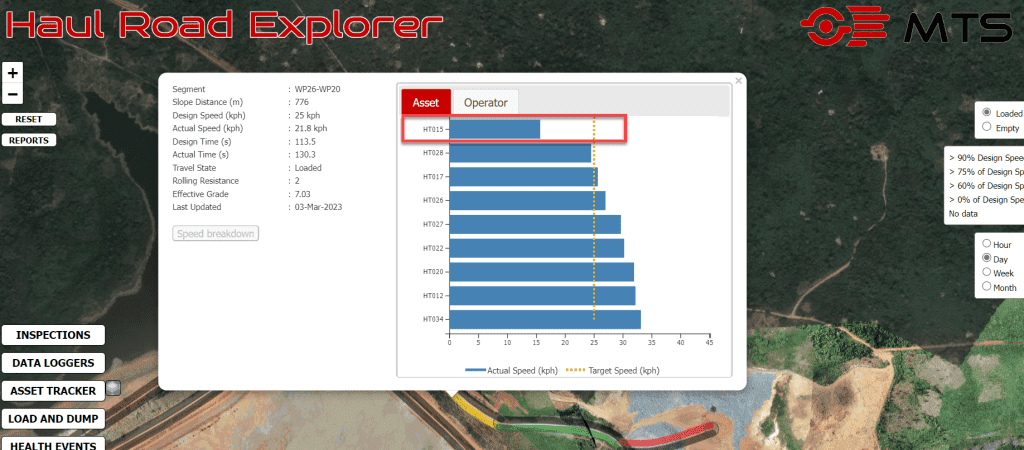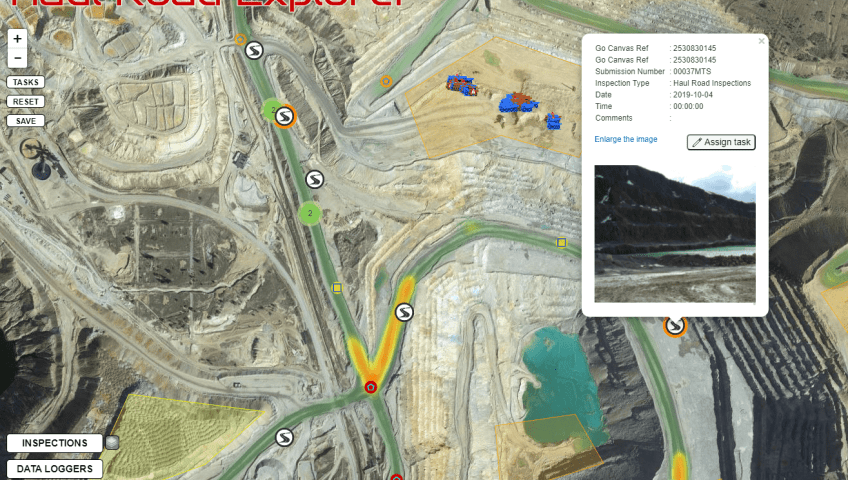How Haul Road Explorer can help optimise an Autonomous Truck Operation
Autonomous Haulage Systems (AHS) can help mines reduce operating costs, improve productivity and achieve more consistent haulage. The implementation of such a complex system does however require substantial investment and significant change management in all areas from mine planning, to maintenance, to operations.
Rather surprisingly, an often overlooked area is the quality of haul roads and their impact on the autonomous fleet. We’ve found this is largely down to data residing in individual silos and often in an unfriendly format. Manual processing is required and quite frankly this often gets overlooked.
Haul Road Explorer for Autonomous Haulage
MTS’s Haul Road Explorer (HRE) enables mining operations to quickly, easily and repeatedly analyse their haulage network. It displays the condition of both your haulage routes and haulage fleet by analysing thousands of kilometres of your mine’s haulage data every day. Areas always in need of attention such as poor road construction that impact chassis and tyre life, incorrect truck operation that’s difficult to easily pin-point and areas of excess waiting can now be quickly identified.
For a conventional operation resulting actions may include targeted operator training, operate for reliability programs, cycle time optimisation and mine plan compliance.
For AHS, whilst some of these traditional issues such as operator abuse are now less relevant; others have become more important and new ones have popped up. To support our AHS customers, we have adapted and introduced new functionality to Haul Road Explorer to help manage these challenges.
1. Clearing the Obstacles
When AHS trucks identify an obstacle in their path they will stop at a safe distance until site personnel clear the problem. Reasons for such a stoppage include rock spillage, windrows and sometimes false alarms. Clearly for both safety and production, it is important to quickly identify the root cause and get the truck moving again. What, however, can often be overlooked are repeated obstacles in the same area caused by an underlying problem. To help out AHS sites, we’ve added the ability to quickly dive into obstacles to understand patterns, trends and ultimately areas that require focus.

Haul Road Explorer helps identify trends, patterns and areas that require focus.
Recently this new feature was used to quickly identify several areas of interest at an AHS site. This included a haul road corner missing a superelevation that was leading to spillage and obstacle stoppages, overall slower haulage as well significant impact to asset health. Using Haul Road Explorer’s road work priority assistant, it was calculated that this was costing the operation nearly 5000 tonnes in lost tonnes per week
2. An Easier Approach to Mine Model Management
Like with a manned fleet management system, the mine model has to be kept constantly up to date; and with additional data including exclusion zones and speed limits.
To make the upkeep less onerous (and thus less likely to be missed or not done properly), the mine model setup can be interrogated in Haul Road Explorer. Design versus actual discrepancies can be quickly identified and resolved. This easily repeatable exercise allows AHS sites to more effectively manage the model in real time.
3. A Fresh Spotlight on Asset Health
AHS driving of a truck is generally much more consistent across a fleet then by conventional operation. This allows for poorly performing trucks to be more easily identified.
Within HRE and supporting dashboards, a poorly performing truck can be quickly identified and its impact on overall cycle time, production and often fuel consumption quantified. A decision can be made to remove it from production, execute corrective maintenance and return to work fully functional.

Haul Road Explorer helps identify trends, patterns and areas that require focus.
In a recent win at one operation utilising HRE, haul times up a ramp were higher than expected. A single truck was consequently identified as the main contributor. Using the health data the root cause was found to be air filter restrictions on the ramp leading to the engine derating, slowing haulage progress for itself and other assets. This truck was immediately sent for maintenance and returned back to work in full health within the hour.
4. Out of Comms/GPS
Unlike manned trucks that are able to still operate in areas of poor/no coverage AHS enabled trucks will report issues in these locations. If sizable, the system will create a dynamic exclusion zone that grows as time passes. Any zones met will cause AHS to shut down for safety reasons.
Haul Road Explorer now allows users to quickly plot and identify these areas of low/poor comms/GPS and take appropriate action much more proactively.
5. Pinpointing Congestion Hotspots
Haul road bottlenecks may not always cause AHS trucks to stop; but it will certainly slow them down. Proactive management and utilisation of the supporting auxiliary fleet is important to avoid unnecessary congestion, decreased productivity and increased costs.
HRE allows sites to understand where AHS truck’s behaviour has been altered due to other equipment in the area. This can be useful to identify areas of congestion such as junctions or where other vehicles more commonly operate. HRE was recently used at an AHS equipped site, which resulted in additional segregated light vehicle roads being created at several key points. This decongested the main haul allowing the AHS to operate at peak haulage performance.
Haul Road Explorer continues to be enhanced to meet the needs of both the manned and autonomous operations. The MTS team works closely with operations to embed this tool within their processes and return value on their investment.
Could Haul Road Explorer help you mine more tonnes, more efficiently? Contact us to find out more.

